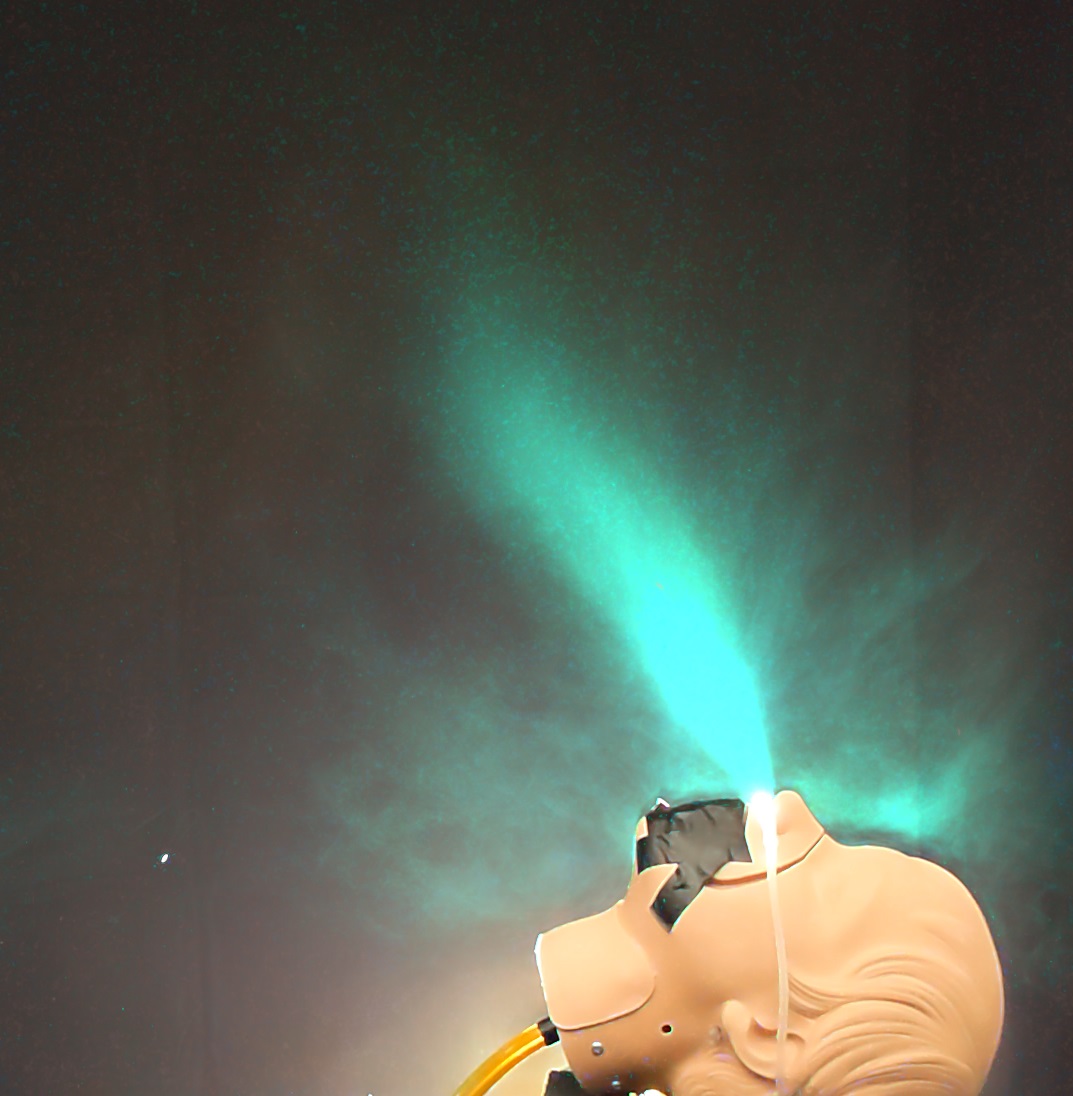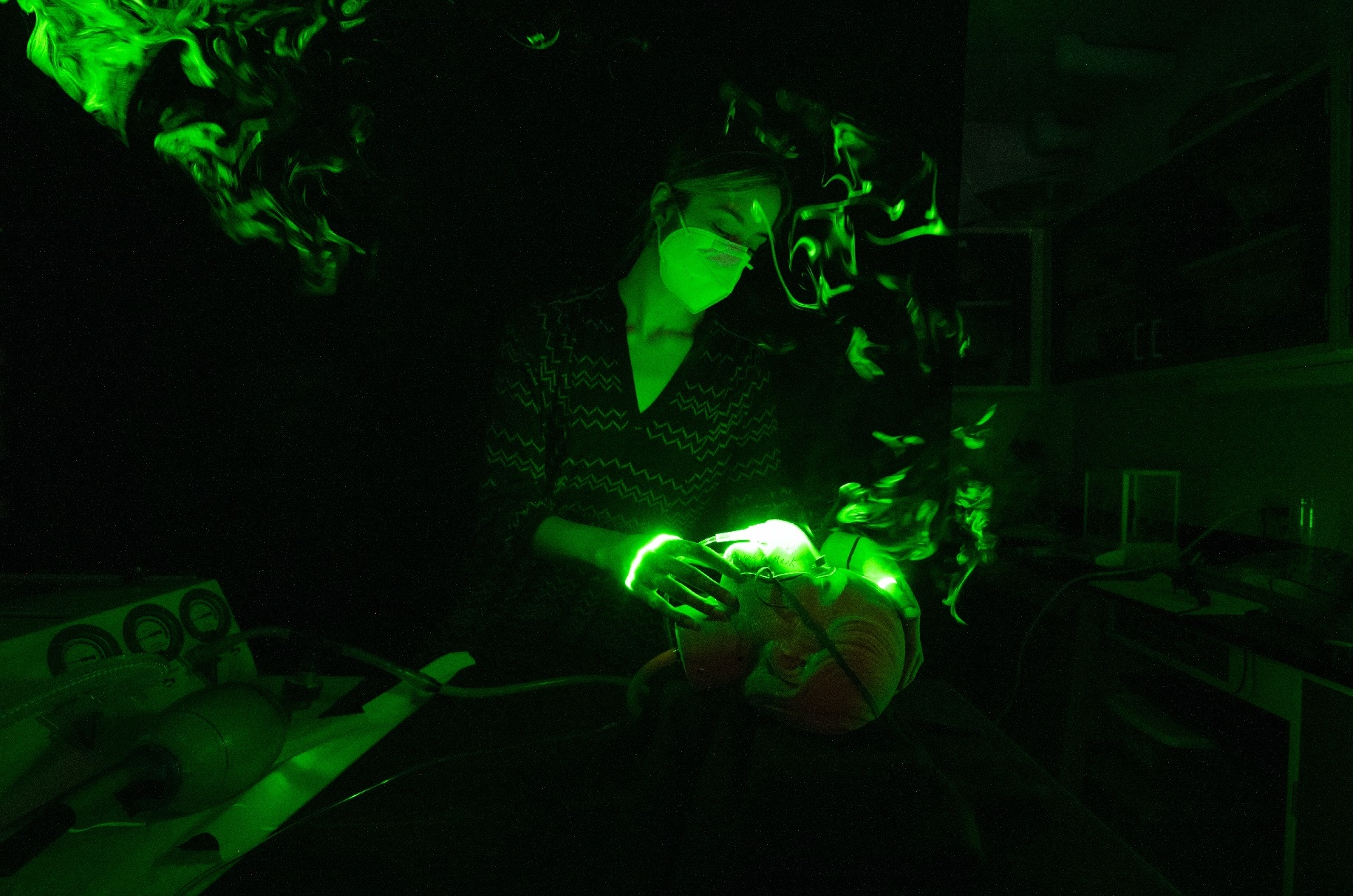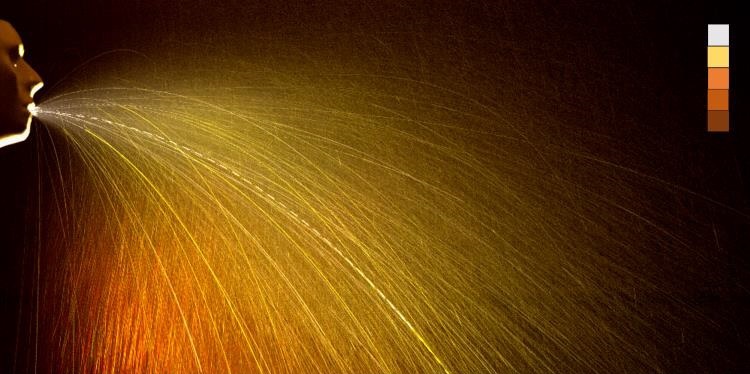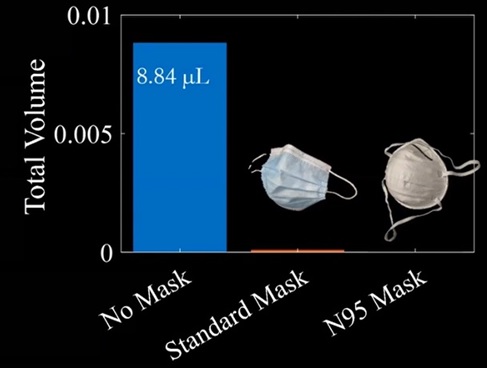COVID-19 and Infectious Disease Study
PI: Arshad Kudrolli
We are investigating infectious respiratory disease and COVID-19 transmission using fluid flow visualization techniques and physical modeling. In collaboration with Dr. McGee at UMass Medical School - Baystate, we are also studying bioaerosol dispersion associated with oxygenation devices used in treating COVID-19. We are developing strategies to mitigate risk of infection from patients to healthcare workers and first responders.
Movies
Nasal cannula exhalation mitigation with surgical mask, Arshad Kudrolli, Brian Chang, Jade Consalvi, Anton Deti.
Simple O2 mask exhalation mitigation with surgical mask, Arshad Kudrolli, Brian Chang, Jade Consalvi, Anton Deti.
Sneeze mask mitigation, Brian Chang, Ram Sudhir Sharma, and Arshad Kudrolli.
Publications
Assessment & mitigation of O2 therapy driven spread of COVID-19, Arshad Kudrolli, Brian Chang, Jade Consalvi, Anton Deti, Christopher Frechette, Helen Scoville, Geoffrey R. Sheinfeld, and William T. McGee, medRxiv 2021.02.06.21251266.
Supplementary Document: Assessment & mitigation of O2 therapy driven spread of COVID-19, Arshad Kudrolli, Brian Chang, Jade Consalvi, Anton Deti, Christopher Frechette, Helen Scoville, Geoffrey R. Sheinfeld, and William T. McGee, medRxiv 2021.02.06.21251266.


Aerial mucosalivary droplet dispersal distributions with implications for disease mitigation, Brian Chang, Ram Sudhir Sharma, Trinh Huynh, and Arshad Kudrolli, Phys. Rev. Research 2, 043391 (2020); DOI: 10.1103/PhysRevResearch.2.043391.


Media
ClarkNow press article, October, 28, 2020.
Dr. Brian Chang's Colloquium on COVID-19 sneeze dispersal research on YouTube.
Diagnosing physics of COVID-19, by Cyrus Moulton, Worcester Telegram, June 20, 2020.
Funding
U.S. National Science Foundation Grant #2030307 - RAPID: Predicting Coronavirus Disease (COVID-19) Impact with Multiscale Contact and Transmission Mitigation. Principal Investigator: Arshad Kudrolli
Contact
Arshad Kudrolli
Department of Physics
Clark University
akudrolli@clarku.edu





